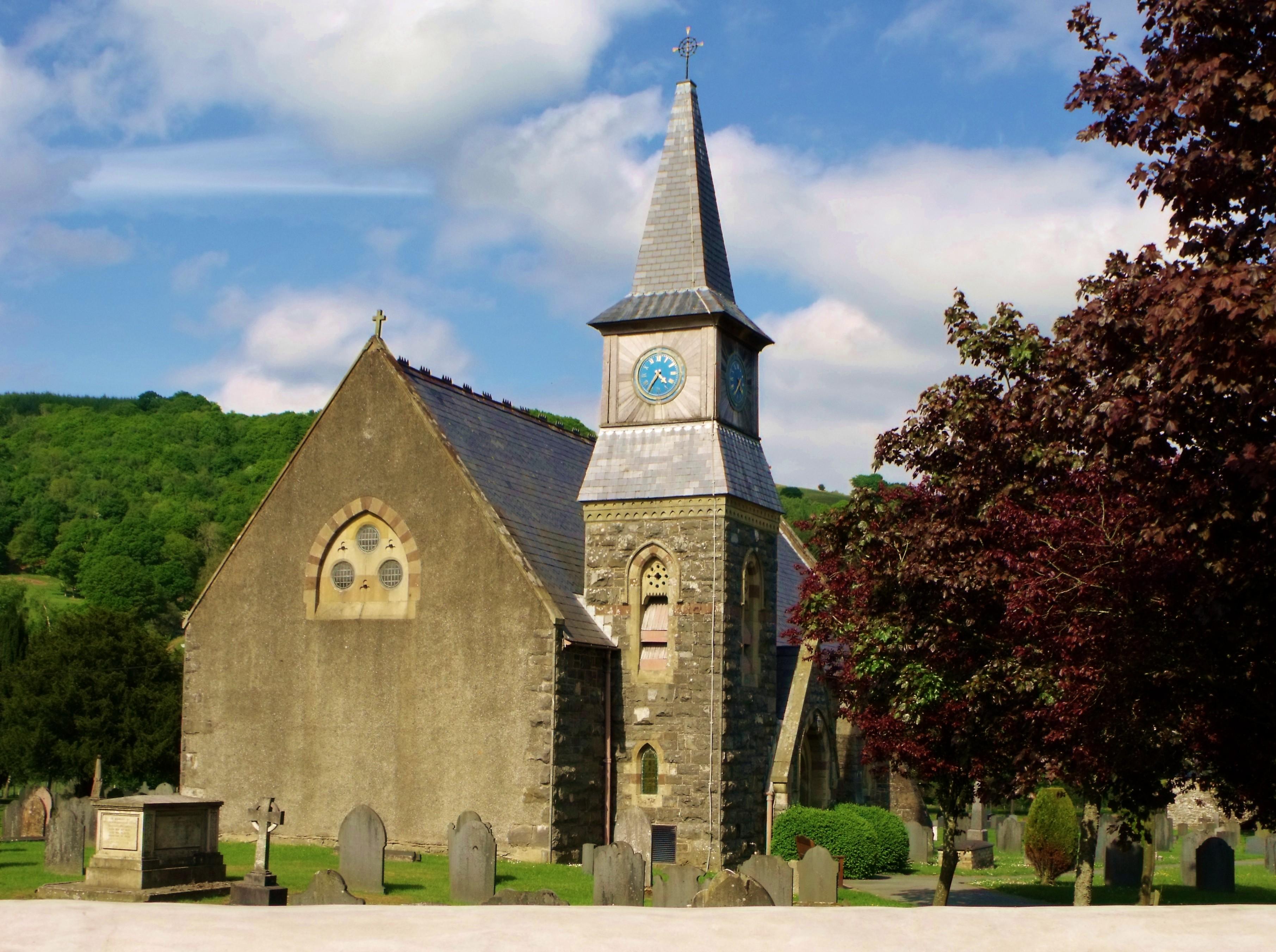St Gwynog
Llanwnog, Powys
Possibly built around the 13th century, the church was founded as early as the 6th century and is a classic example of the situation of the typical early medieval Welsh church.

Nestled in beautifully maintained grounds with the Welsh hills as a backdrop and the Afon Carno gently flowing nearby, St John the Baptist is a haven of peace and tranquillity.
Carno, Powys
St John the Baptist is a rare dedication in Wales and has its origin in the Knights of St John of Jerusalem and the Crusades. Historical records show that a church has marked this ancient site since 1100AD. The Knights established themselves in Carno in the early 13th century. They built a Hospice about 100 yards from the site of the present church wherein travellers and pilgrims might seek sanctuary and be cared for.
The present Gothic style church was built in 1867 and has undergone three restorations in 1909, 1957-1958 and 1990. The plan comprises a single cell nave and chancel with a cross finial.
Inside, the church is light and airy. The walls are constructed of random granite with geometrically cut red yellow sandstone dressings. The steeply sloping roof is clad in plain Welsh slates with decorative bands laid in a diamond pattern. Clamped on the south side interior wall is a 7th to 8th century stele or standing stone found locally. It is incised with a crudely fashioned Celtic Cross within two rough circles. The purpose of these stones is obscure, but some of the 154 such stones discovered in Wales have been found beside ancient burial grounds and on, or in proximity to, Roman roads. Fine stained glass windows, marble and brass plaques and a splendid brass eagle lectern are gifts from the Adams family who were extensive landowners in Carno.
The bell tower to the west of the porch houses three 17th century bells. The spire on the tower is two tier. The second stage of the tower has a decorative stone frieze below the clock. In the churchyard to the left of the main entrance gates stands a yew tree with a girth of over 22 feet which places it in antiquity.
The world wide renowned designer and entrepreneur Laura Ashley who died in 1985 is buried in the churchyard alongside her husband, Sir Bernard Ashley. Carno was the site of their factory from 1967 to 2005. The generosity of the Ashley family is still evident in the gifts to the church.
Llanwnog, Powys
Possibly built around the 13th century, the church was founded as early as the 6th century and is a classic example of the situation of the typical early medieval Welsh church.
Llandinam, Powys
Claimed to date back to around 520AD, the present tower was built in the 13th century, and most of the body of the church was rebuilt in the 19th century.
Aberhafesp, Powys
The church of St Gwynog dates back to the 13th century but was largely rebuilt in 1857.